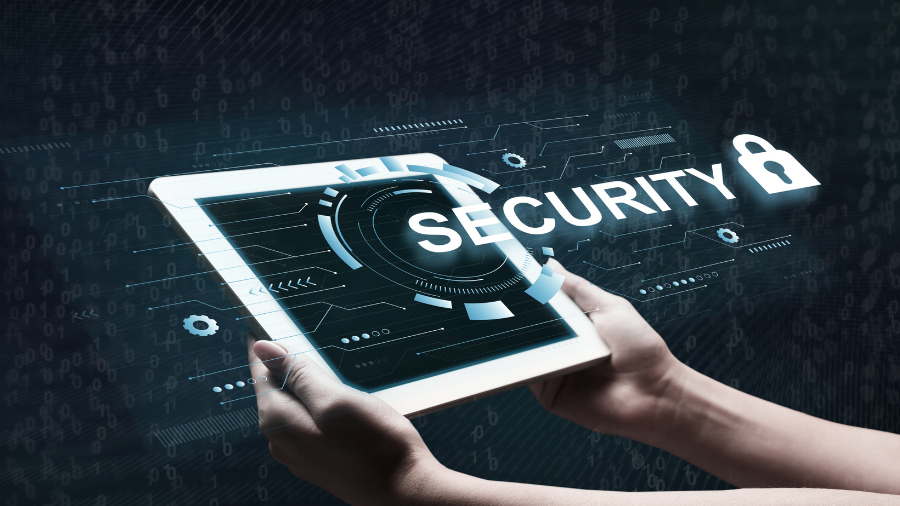A single phishing email. An unusual login from a trusted user. A delay in patching a minor vulnerability.
These are the cracks where attacks begin. And most companies don’t see them until it’s too late.
AI in cybersecurity is changing that not by replacing humans, but by giving them what manual tools can’t: speed, pattern recognition, and the ability to comb through massive datasets in real time without blinking.
Modern threats move fast, learn quickly, and often look nothing like the ones that came before. AI gives security teams a way to keep up by seeing what’s happening as it unfolds.
And that shift? It’s becoming the new standard.
What AI in Cybersecurity Actually Means Today
Let’s strip out the buzzwords.
AI in cybersecurity is about machines that learn from data—then use that knowledge to detect, flag, and respond to threats faster than a human ever could.
We’re not talking about scripted rules or signature matching. This is adaptive technology that watches how users behave, how systems communicate, and what looks off, even when there’s no precedent for it.
In practice, this looks like:
- Real-time scanning of network traffic for anomalies
- Detecting compromised credentials based on login behavior
- Spotting a malicious payload hidden in a seemingly normal file
- Flagging insider threats based on subtle shifts in employee behavior
It’s smarter analysis—built into the fabric of how companies defend their systems.
Why Traditional Security Tools Aren’t Built for Today’s Threats
Legacy security systems were built for a different world—one where threats were easier to label, and attackers followed a familiar pattern.
Today, it’s different. Malware mutates. Phishing emails look real. Attacks are multi-stage, multi-vector, and sometimes orchestrated by AI itself.
Traditional tools are reactive. They look for known threats, compare against existing signatures, and raise an alert when something matches. That works—until something new shows up.
AI in cybersecurity doesn’t wait for patterns to repeat. It builds its own. It learns from historical attacks, adapts to new ones, and flags behavior that isn’t normal—even if it hasn’t been seen before.
That’s not an upgrade. That’s a completely different security mindset.
Where AI in Cybersecurity Makes the Biggest Difference
Not every threat looks like a red flag. AI shines in the gray areas—the patterns most tools miss and the signals that never show up twice the same way.
Real-time threat detection
Instead of sifting through endless alerts, AI surfaces the ones that actually matter. It filters out noise and flags meaningful anomalies—like login attempts from odd locations, or unauthorized API calls.
Insider threat monitoring
Sometimes the danger isn’t outside. It’s the employee who downloads client data at midnight or the contractor accessing files they shouldn’t. AI spots unusual patterns even when credentials check out.
Phishing detection and response
Email filters can catch spam. AI can analyze subject lines, message tone, sender reputation, and even click behavior to catch phishing attempts that traditional filters miss.
Endpoint protection
AI tracks how devices behave—what they install, where they connect, how they move. When something breaks that pattern, AI isolates the device before the infection spreads.
Security automation and orchestration
AI doesn’t just detect threats. It acts. If a breach is likely, it can isolate endpoints, shut down sessions, or reroute traffic instantly—while alerting your team in parallel.
Key Benefits of Using AI for Cybersecurity Measures
It’s not just faster response times. AI brings clarity, consistency, and scale to security operations in ways that manual tools can’t keep up with.

Faster response times
AI shrinks the time between threat detection and action—from hours to seconds. That window can make the difference between a flagged attempt and a full-scale breach.
Lower workload for security teams
Instead of being buried in alerts, analysts can focus on high-priority incidents. AI handles the triage—humans focus on strategy and decision-making.
Better accuracy, fewer false alarms
Traditional tools cry wolf. A lot. AI learns what normal looks like for your environment—so it doesn’t flood the system with noise.
Protection against unknown threats
Zero-day attacks are a real challenge. AI doesn’t need to have seen a threat before to sense that it doesn’t belong.
Constant improvement
Every interaction makes the system smarter. The more it sees, the better it gets. And it doesn’t forget what it learns.
One stat worth noting? IBM reported that companies using AI in cybersecurity reduced their breach lifecycle by up to 74 days. That’s not just faster response. That’s real savings—and real damage avoided.
What to Consider Before Implementing Cybersecurity with AI
AI isn’t plug-and-play. Before adding it to your stack, you’ll need to think about your data, your workflows, and your team’s role in keeping it sharp.
Your data is the starting point
AI needs good data to be effective. That means having structured logs, clean signals, and historical context. Without that, you’re not training intelligence. You’re just guessing faster.
Don’t rip and replace—integrate
Your existing tools matter. A good AI cybersecurity solution should plug into your SIEM, firewalls, and endpoint tools—not force you to rebuild your stack.
Start small, scale smart
You don’t need to deploy a full AI suite on day one. Start with one high-impact use case—like threat detection or phishing prevention—then expand.
Keep humans in the loop
AI flags. Humans verify. Always build a workflow that lets your team investigate, escalate, or override. AI is sharp, but it’s not infallible.
Know your compliance requirements
Some AI tools process sensitive data to build behavioral models. Make sure your vendor’s approach aligns with your industry’s privacy and compliance rules.
Common Pitfalls to Avoid in AI Cybersecurity
Like any powerful tool, AI can backfire when it’s rushed or misunderstood. Here’s where teams often get it wrong—and how to stay ahead of those mistakes.
Trusting AI blindly
Set-it-and-forget-it doesn’t work. You still need to monitor performance, refine models, and validate outcomes.
Skipping contextual training
An AI system trained on another organization’s data won’t perform well in yours. Make sure the system learns from your environment—not someone else’s.
Neglecting post-implementation feedback loops
AI systems improve over time—but only if you feed them the right corrections. If an alert is a false positive, mark it. If it’s real, reinforce it. That’s how the system stays useful.
Over-engineering the rollout
Trying to do everything at once slows you down and dilutes results. Focus on one pain point, measure the impact, and expand from there.
The human-AI dynamic: amplifying, not replacing
This isn’t a job replacement conversation. It’s a capability expansion one.
AI in cybersecurity doesn’t replace analysts. It gives them more signal, less noise, and more time to think strategically. Analysts stop drowning in alerts and start focusing on the patterns that really matter.
The best security teams are using AI like an extra set of eyes—ones that never blink, never sleep, and never miss a signal just because it was buried in line 3,472 of a log file.
Human judgment is still the final layer. But AI makes sure that judgment is pointed in the right direction, faster.
Final Thoughts
AI in cybersecurity brings all three: visibility, speed, and intelligence.
It doesn’t just react to what’s happened. It sees what’s coming. It learns from every attempt. And it gives your team the power to act before the damage is done.
In an environment where milliseconds matter and threats evolve daily, the companies staying ahead are building systems that adapt in real time.
And that’s what AI brings to the table. Not magic. Just momentum. In the right direction.



